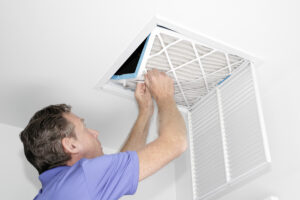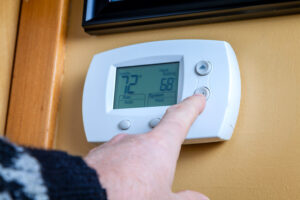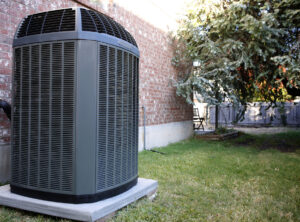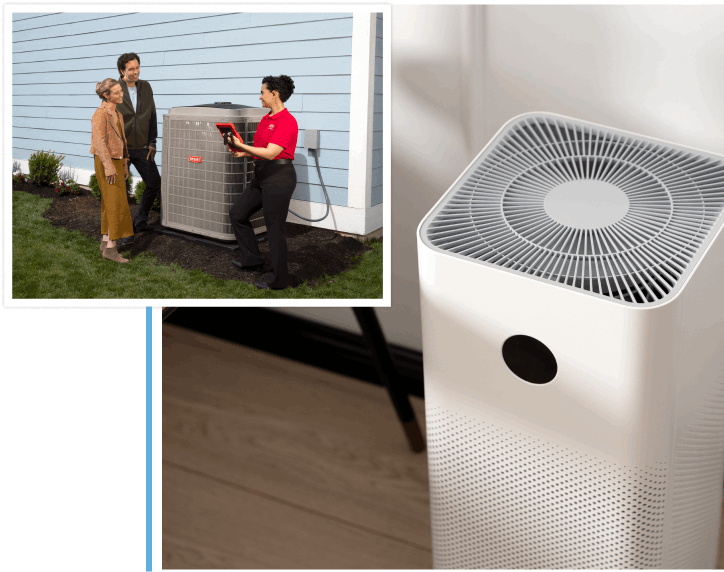
HVAC zoning makes it possible to heat and cool different parts of the house at different temperatures. You can divide the home into as many zones as you want or need, making it easy to give everyone their ideal level of comfort. The enhanced temperature regulation ensures consistent temperatures and fewer thermostat battles, so no one has to sacrifice their preferences. A lot of homes use this form of heating and cooling to reduce energy bills. Let’s take a closer look at how zoning works so you can make the best choice for your house.
How Does HVAC Zoning Work?
HVAC zoning works by dividing the home into one or more zones. Every zone gets its own thermostat, so you can independently control the temperature in each space. The outdoor part of the system consists of the compressor, condenser coil, fan and electrical components. What’s so great about HVAC zoning is that you can do it with both ducted and ductless systems.
In a ducted setup, dampers are placed inside the ductwork and air vents. This is what controls the airflow through each zone. Every zone stays closed unless you adjust the thermostat to call for heating or cooling. With a ductless configuration, each zone gets its own air handler. Both setups simplify saving energy because you can heat and cool the parts of the house that you actually use without heating or cooling the others.
Zoning works well in both new and older homes. A lot of households sync their zoned system with a smart thermostat to achieve the best efficiency possible. Smart versions use complex algorithms and learning technologies to understand your HVAC preferences and make automatic adjustments. The savings they provide can be quite significant over an extended period of time.
Two-Story Homes
HVAC zoning works well for two-story houses. Rooms on the upper floor tend to be warmer than those on the lower floor, particularly during the summer, since hot air rises. Regular systems often have difficulty maintaining a constant temperature at both levels. You can use zoning to make the upper floor colder without making the lower level too chilly. In the winter, it’s especially helpful since lower levels sometimes have higher heating needs than upper floors. Each level remains at a suitable temperature year-round thanks to zoning.
Homes With Finished Basements or Attics
The temperature in a finished basement or attic will likely fluctuate from. In the winter, these areas might seem chilly, while in the summer, they can feel hotter. With zoning, you can manage these trouble spots precisely. This is particularly useful if you’ve converted your basement into an extra bedroom, gaming area or office space.
Homes With Sunrooms or Large Windows
When the sun shines through large windows or sunrooms, the temperature inside these spaces rises rapidly. When it’s cold outside, they might seem cooler than other rooms in the house. The use of zoned HVAC systems allows for year-round comfort in these areas without making the rest of the home too hot or cold.
Homes With Different Temperature Preferences
Being able to set different temperatures is one of the best reasons to use HVAC zoning. Perhaps someone in the home likes their bedroom much cooler than the rest of the house. With HVAC zoning, you can adjust each zone individually so you have the ideal comfort level for everyone. When everyone gets what they want, there’s less fighting over the thermostat.
Homes That Deal With Uneven Heating and Cooling
A lot of homes, especially older ones, don’t heat or cool evenly. This can cause major comfort issues, especially in areas like upstairs bedrooms, sunrooms or finished basements. Zoning fixes these problems by letting you set customized temperatures in each zone. If one room starts to get too warm or cool, you can simply adjust the thermostat for that zone. It’ll reach your desired temperature without affecting the rest of the house.
Potential Cost Savings and Comfort Benefits
Zoned HVAC does much more than make the home more comfortable—it also reduces electricity and fuel costs by minimizing wasted energy. You won’t have to run the HVAC at full blast around the clock since you can heat and cool only the parts of the house that you’re using. Many experts say you can save up to 35% on heating and cooling costs with HVAC zoning.
Contact AIS Heating & Cooling now to access top-tier HVAC zoning services in Livermore, CA. We offer free consultations and other AC maintenance services so you can find the perfect solution for your home’s comfort and efficiency needs.





